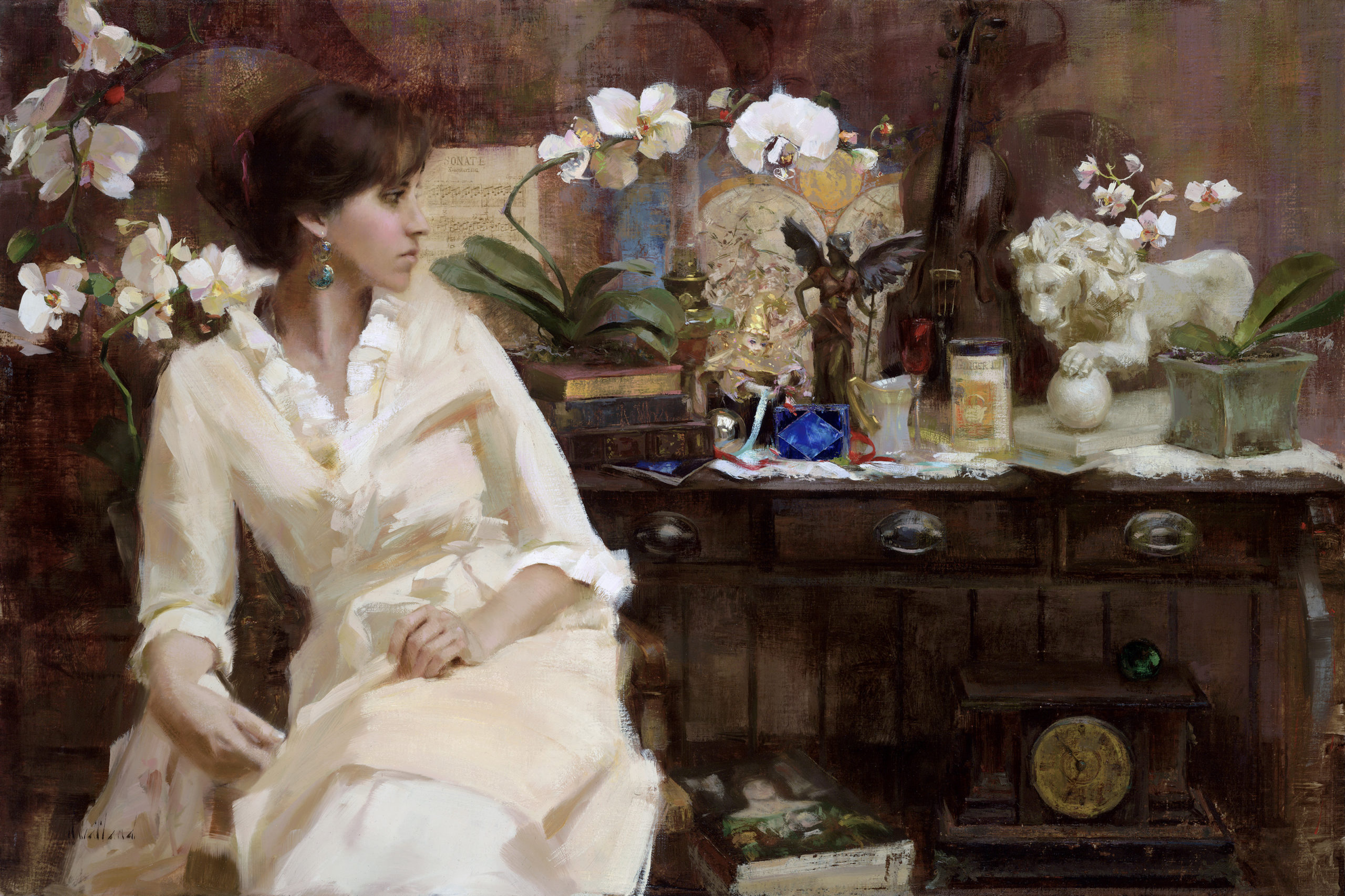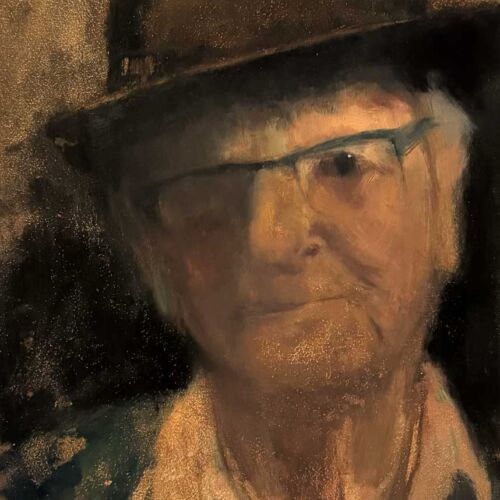Figurative Oil Painting: From Idea to Canvas - A Step-by-Step Strategy
Figurative Oil Painting: From Idea to Canvas - A Step-by-Step Strategy
Blog Article
A Trip Via the World of Figurative Oil Painting: Discovering the Special Qualities and Emotional Depth of the Tool

Background of Figurative Oil Painting
Arising throughout the late Center Ages and prospering throughout the Renaissance, figurative oil paint has a rich history that shows both imaginative advancement and social development. Oil paints were utilized in Europe as a way to improve the luminosity and deepness of shade in art work. Artists such as Jan van Eyck originated the tool, showing its possible to capture complex information and structures, therefore permitting a much more realistic representation of the human type.
As the Renaissance progressed, renowned figures like Leonardo da Vinci and Michelangelo broadened the borders of metaphorical oil paint. They highlighted anatomical accuracy and point of view, developing works that communicated emotion and narrative depth. The tool's adaptability allowed for experimentation with light and shadow, bring about the growth of chiaroscuro techniques that additionally enriched the visual experience.
One-of-a-kind Attributes of the Medium
The development of figurative oil paint has actually been considerably affected by the unique characteristics of the medium itself. Oil paint, composed of pigments suspended in oil, provides artists a remarkable flexibility that enables a variety of finishes and appearances. Its sluggish drying out time enables thorough mixing and layering, which can develop depth and brightness unattainable in various other tools.
Furthermore, oil paint's rich pigmentation provides vibrant colors that keep their strength in time. This particular is crucial in metaphorical paint, where capturing the nuances of complexion and psychological expressions is vital. The capability to accomplish refined slopes and soft changes improves the lifelike top quality of topics, enabling musicians to communicate intricate moods.
Furthermore, oil paint sticks well to numerous surfaces, such as canvas, timber, and metal, widening the range of artistic expression. The medium's versatility supports various techniques, from detailed realism to meaningful brushwork, allowing musicians to explore their individual designs.
Ultimately, the distinct homes of oil paint not just improve the visual experience however likewise equip musicians to interact extensive narratives, making metaphorical oil painting a deeply evocative art form.
Methods and Styles Utilized
Within the world of figurative oil paint, artists employ a diverse range of methods and designs that add to the depth and splendor of their work. One noticeable strategy is glazing, where clear layers of paint are applied over dried layers, enabling light to reflect and permeate, boosting luminance and depth. This approach is typically utilized to attain a sense of realism and complexity in complexion.
Another method is impasto, where thick layers of paint are applied with a combination knife or brush, creating a distinctive surface area that adds a three-dimensional quality to the paint. This design can evoke a natural response, drawing the audience in with its responsive nature.
Musicians additionally check out various brushwork designs, from fine, comprehensive strokes that catch elaborate functions to more comprehensive, much more meaningful strokes that convey motion and feeling (figurative oil painting). The selection of shade scheme substantially influences the overall mood of a piece, with cozy tones usually giving sensations of convenience and trendy tones suggesting melancholy
In addition, the assimilation of chiaroscuro, the comparison between light and shadow, permits musicians to develop dramatic results that enhance the narrative quality of their job. Each strategy and design is meticulously anonymous chosen to raise the audience's experience and understanding.
Psychological Deepness in Figurative Art
Psychological depth acts as a cornerstone in metaphorical art, permitting artists to transcend plain representation and involve viewers on an extensive level. This emotional resonance is usually achieved via the nuanced portrayal of human numbers, expressions, and communications. Artists harness the power of light, shadow, and shade to stimulate sensations that resonate deeply with the audience, developing a visceral link to the subject matter.
In figurative oil painting, the detailed layering of paint can mirror the complexities of human emotion. The selection of combination, whether cool or cozy, plays a vital role in setting the mood and environment of a piece. For example, softer hues might evoke serenity and introspection, while strong, contrasting shades can communicate tension and drama.

Influential Artists and Their Functions
Numerous significant musicians have actually dramatically shaped the landscape of metaphorical oil painting, each adding special viewpoints and strategies that remain to inspire contemporary creators. Amongst these artists, Lucian Freud stands apart for his intense emotional depth and raw representation of the human type, frequently blurring the lines between appeal and decay. Freud's jobs, characterized by thick, impasto brushstrokes, welcome viewers to face the complexities of identity and susceptability.

Similarly, Andrew Wyeth's thorough realistic look in items like "Christina's World" captures extensive stories within relatively simple make-ups. His use of light and shadow evokes a sense of fond memories and emotional vibration, attracting visitors right into the intimate worlds he portrays.
In the world of modern-day art, Kehinde Wiley has actually gained acknowledgment for his vivid, larger-than-life portraits that challenge conventional notions of depiction. By putting individuals of shade in contexts reminiscent of classical portrait, Wiley's work redefines the canon of art background.
These artists, along with others, check my source have not only enriched metaphorical oil painting however have actually also increased the dialogue surrounding feeling, culture, and identity, making certain that the medium remains an important kind of expression in the art globe. figurative oil painting.
Final Thought
In final thought, metaphorical oil painting stays an effective medium that encapsulates the intricacies of human feeling via its abundant pigmentation and functional strategies. The historic advancement of this art form, combined with its special characteristics, enables for extensive imaginative expression. Strategies such as glazing and impasto improve news the psychological resonance of each piece, while the payments of prominent musicians remain to motivate and form the discourse surrounding this classic genre. The journey through metaphorical oil paint exposes its enduring importance in the art globe.
The expedition of figurative oil painting uses an extensive understanding into the interaction of method, emotion, and historic context that specifies this age-old tool. Oil paint, composed of pigments put on hold in oil, offers musicians a remarkable adaptability that enables for a broad array of structures and coatings.Within the realm of metaphorical oil paint, artists utilize a diverse range of techniques and designs that add to the depth and splendor of their work.Various prominent artists have dramatically formed the landscape of figurative oil painting, each adding distinct point of views and techniques that proceed to inspire modern makers.In conclusion, figurative oil paint remains an effective medium that envelops the intricacies of human feeling with its rich coloring and versatile strategies.
Report this page